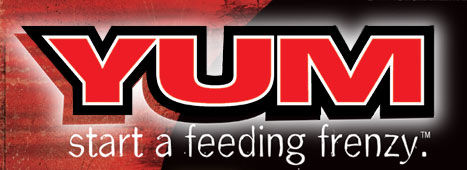Samurai Striper
By JERRY CROOK
Whether it is saltwater, hybrid or white bass, there is no better time to catch striper than the spring spawning run. Depending on the severity of the winter, the spawning ritual can take place as early as the end of February, but in my home of Alabama it usually begins to heat up around the full moon of March. The best times usually occur between the new moon and the full moon of March and April and can last through the full moon of May.
 There are two locations to look for the striper during this time – in the tailrace area below the dams or in the back of tributaries as far as you can go in your boat. After that you can wade or bank fish and catch them.
There are two locations to look for the striper during this time – in the tailrace area below the dams or in the back of tributaries as far as you can go in your boat. After that you can wade or bank fish and catch them.
First, we will talk about fishing the tailrace areas. This time of year you can most effectively catch them two ways: using a jig or live bait. The dams in my area (the Tennessee and Coosa River), when they are pulling water through to generate electricity, are the most effective areas to fish. These dams provide a generating schedule that you can access by telephone. On the Coosa River you can call the Alabama Power Citizens Action Line locally at (205) 257-1077 or 1-800-Lakes-11 and request the dam information in the area you are interested in fishing. On the Tennessee River, you can call the TVA Lake Information Line at 1-865-632-2264 and they will tell you when they are pulling water.
The method of tailrace fishing that doesn't require live bait is using a 3/8 to 1/2 oz. lead head jig with a minnow body on it. I outfit this rig with a 6'6' medium action Shakespeare Ugly Stick Lite rod with a Pflueger Trion reel spooled up with 20 lb test Silver Thread Excalibur line. The natural bait of choice for striper in the south is threadfin shad. These minnows are pearl and silver in color with a  chartreuse green tail. The minnow body that works the best below all the dams on the Tennessee and Coosa River chain is Yum's 4" Samurai Shad in the Glow/Chartreuse Tail color.
chartreuse green tail. The minnow body that works the best below all the dams on the Tennessee and Coosa River chain is Yum's 4" Samurai Shad in the Glow/Chartreuse Tail color.
Now that you are rigged up correctly, carefully motor your boat up to the outside turbine, allow your boat to start drifting and then cast to the edge of the turbine. Allow your jig to find bottom and then periodically reel in the slack as you work your jig through the fast water.
At times, these fish will hit the jig at a steady retrieve with little or no action. When the fish are really stacked up this is a great way to get your arm pulled off! Make sure your minnow body in on straight and running true or they will not hit it. You will need quite a few bodies on a good day. Also, change bodies after a few fish because they will get torn up easily.
If you want to catch bigger fish, there is no better bait than a large threadfin shad. These can be caught in the river by either dipping them with a shad knocker or throwing in a cast net. The best place to throw your net is eddy pools along the riprap. After you get some bait in your live well, it's time to go catch some stripe. If the fish are in the boils I will rig up a three-way swivel with one-ounce bottom sinker on about a six-inch line and a leader of about 30-inches. Hook size will depend on shad size. You can use either spinning or baitcasting with 17-20 lb. test line.
Hook your shad from bottom lip up making sure both lips are impaled. Run your boat up to the boils and cast, letting your weight hit bottom. Then adjust your line by reeling in until you make contact with the bottom and hop it along. When the big boy hits, you'll know it. These fish are capable of long runs and if they go sideways in the current I recommend chasing them down with your boat. Both the current and the stripe's gill plate are capable of breaking your line. These two methods should get you started below the dams. My personal best saltwater came from below Wilson Dam on the Tennessee River. It weighed 47 pounds.
If the fast water below a dam is not your cup of tea, and it's not for everybody, then start at the mouth of your favorite creek, look for fish on your electronics while casting a jig or minnow imitation crankbait such as a Smithwick Rattlin' Rogue or Rebel Minnow. These fish will migrate all the way back to the shoals in the very back of the creek. These fish usually are not as large as those found below the dams, but they are still great fun. When the fish get too shallow for your boat you might want to wade fish for them. In the spring, the spawning period for striper is a lot like the deer rut. The big ones are there to be caught, so put away your largemouth lures and tie on a jig. You won't be disappointed.
If you would like more information on striper fishing or would like to book a trip, call Jerry Crook of Tailrace Guide Service at 205-608-0933 (cellular phone 205-243-6198) and learn how to catch them.


